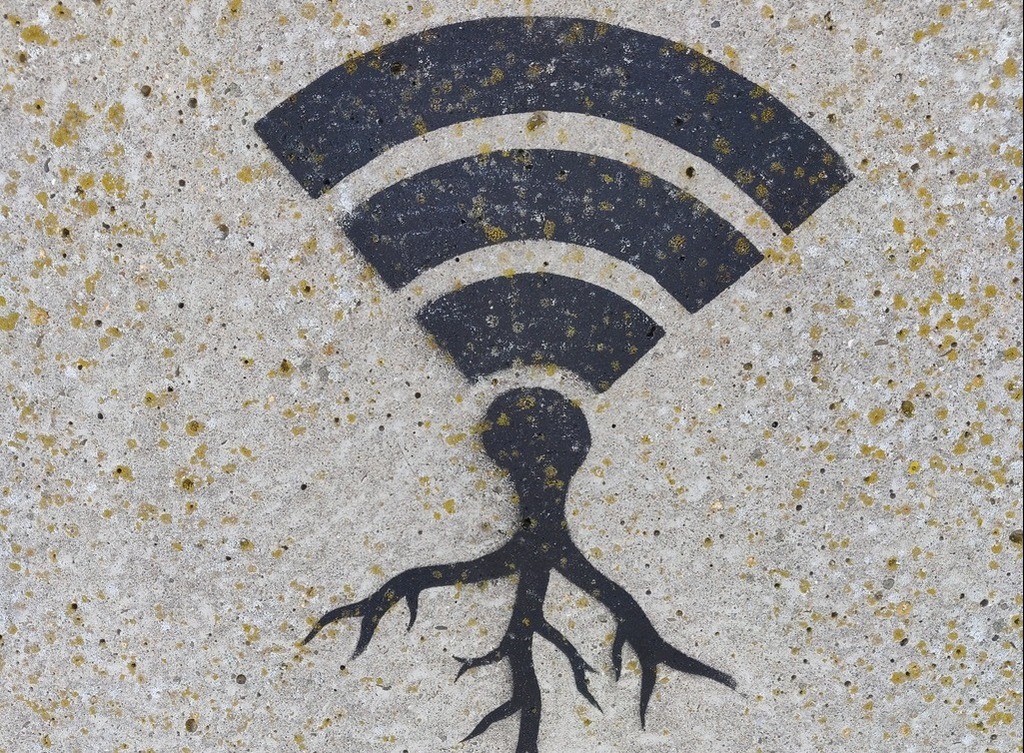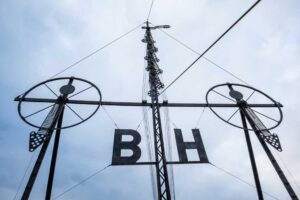The history of the Wi-Fi Alliance is a story of collaboration, standardization, and innovation that has played a pivotal role in shaping the way we connect to the internet wirelessly. Over the years, the Wi-Fi Alliance has evolved from a small group of technology companies into a global organization that certifies Wi-Fi products, establishes common Wi-Fi standards, and advocates for wireless connectivity.
The Wi-Fi Alliance did more than set the industry standards for today’s Wi-Fi networks. The non-profit organization — or, more accurately, its predecessor — was also responsible for the term “Wi-Fi.”
How did this global nonprofit organization come to be, and what’s the real meaning behind “Wi-Fi”? Read on to find out.
Early Origins: The Birth of Wi-Fi
The history of the Wi-Fi Alliance is intrinsically linked to the development of Wi-Fi technology itself. Wi-Fi is the standard for wireless local area networking (WLAN) that allows electronic devices to connect to a network wirelessly. The story begins in the late 1980s and early 1990s when various technology companies were working on wireless networking solutions.
In 1985, the Federal Communications Commission (FCC) opened up the Industrial, Scientific, and Medical (ISM) radio bands for unlicensed use, providing spectrum for low-power wireless communication. The ISM bands had been reserved for industrial RF emissions, but they also supported some communication uses (mostly in the military).
Removing licensing restrictions from these frequencies allowed many new technologies to develop — from electronic toll collection to wireless telemetry to garage door openers. It also led to the birth of wireless networking. Several companies, including NCR Corporation and AT&T, developed new products using their own proprietary wireless networking technologies during this period.
Networking in the Nineties: A Decade of Experimentation
In the early part of the 1990s, the internet had yet to take off commercially. But the Clinton administration was interested in growing the nascent information and communication technologies (ICT) industry, and pushed through in 1996 a plan to make a small amount of unlicensed wireless spectrum available for so-called Unlicensed National Information Infrastructure (U-NII) devices.
Now, for the first time, low-power wireless networks could be made commercially available. Crucially for the development of new use cases for this spectrum, the FCC didn’t place many restrictions on what kinds of products could be launched.
“The spectrum did not have tight restrictions on its purpose — that is, the FCC did not control the applications to which the applications were targeted, as long as the purpose did not interfere with other activities outside the band,” the book History and Strategy reads.
At the same time as the FCC was loosening its spectrum rules, technologists were working on new uses for networking. The Institute of Electrical and Electronics Engineers (IEEE) had launched the 802.11 subcommittee in 1990 (as part of the 802 Committee that developed Ethernet standards in the Eighties) to create standards of interoperability for wireless data transmission over short distances. Over the ensuing years, different vendors experimented with wireless local area networks in universities, warehouses, and other settings. But none took off commercially, due in large part to a lack of interoperability on the end-user side.
Foundation of WECA: The Precursor to the Wi-Fi Alliance
All of this changed when the 802.11 subcommittee formalized a wireless connectivity standard called 802.11a in 1999. Shortly thereafter, the subcommittee published a successor standard, 802.11b, that allowed users to create a real home network for the first time.
Apple and Microsoft embedded the 802.11b into their products, leading to a growing number of devices that could connect to the internet wirelessly. Networking companies launched many products in response — but they saw an issue with the “802.11b” moniker.
In 1999, a worldwide network of companies — 3Com, Lucent, Nokia, and others — formed the Wireless Ethernet Compatibility Alliance (WECA) to rebrand 802.11b and drum up interest in wireless access points. It was WECA that coined the term “Wi-Fi.”
Wi-Fi isn’t short for “wireless fidelity,” as some sources claim. It’s merely a marketing term without any real meaning — just a shorthand phrase for wireless internet connectivity.
In addition to rebranding 802.11b, WECA took charge of Wi-Fi certification. Its certification program aimed to eliminate the interoperability issues that limited the popularity of local wireless networks in the early and mid-Nineties, adding global momentum to the growth of Wi-Fi.
WECA also rebranded itself: renaming itself the “Wi-Fi Alliance” in 2000. This is the name it has today. And its remit — promoting Wi-Fi interoperability and certifying devices (e.g., a wireless access point) for reliable connectivity — remains the same. The Wi-Fi Alliance seal of approval communicates to consumers that their Wi-Fi devices will work together, and it does so in a slightly more memorable way than “802.11.”
Photo by Ken Friis Larsen on Unsplash.


